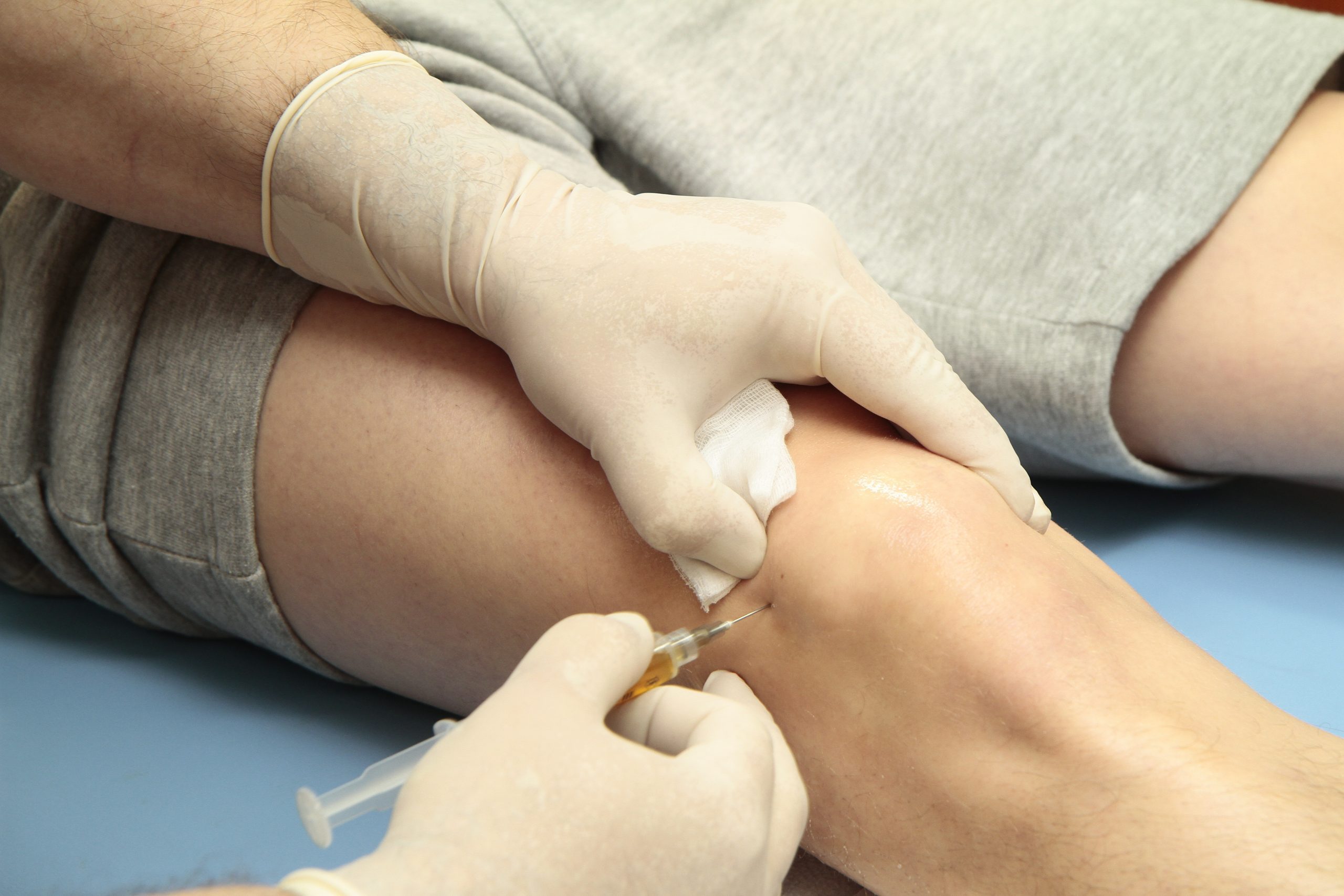

PRP Injection
Book a Detailed Treatment Call


How do PRP injections work?
PRP injections work by blood being drawn from the body then being processed in a centrifuge to separate the platelet-rich plasma in the blood. Next the plasma is processed further in the centrifuge in order to separate the protein liquid or ‘growth factors’. This is then injected into the joint to ease the pain and prevent further degradation of the cartilage.
For the procedure itself, the area will be numbed, and an ultrasound used to ensure the blood plasma is injected precisely into the affected area to stimulate cell repair and kickstart the healing process. A PRP injection can be a beneficial option for those who are suffering with a sports injury, osteoarthritis, or joint degeneration.
Why choose London Cartilage Clinic for your PRP injection?
Successful results with PRP treatment requires a detailed understanding of the biology, and taking into account the individual circumstances and needs of each specific cartilage environment. Our specialists are industry-leaders whose services are often in demand due to their extensive knowledge and years of experience generating life-changing results for patients.
Preparation is essential to fully optimise the blood and ensure good quality PRP production for treatments. Through our commitment to getting the best possible outcomes London Cartilage Clinic has established a unique protocol to help our patients prepare and optimise their PRP. Diet, exercise, and stress levels all directly influence growth factors and cytokines in the blood. This attention to detail in making sure patients are fully aware of how to optimise their PRP is what sets us apart from other clinics. If you’re searching platelet rich plasma injection near me, London Cartilage Clinic is here to provide this high-end treatment and deliver lasting results.




Frequently Asked Questions
Patients typically start to feel less pain and an increase in function within four to six weeks of having a PRP injection. However, exact timelines will vary based on the area being treated and the severity of the damage.
The main benefits of PRP include:
- Improved mobility
- Reducing pain and discomfort
- Provides an alternative to invasive treatments like knee surgery
- Quick healing allows you to resume your normal activities faster
- It can help people who have not responded to other treatments
Given that the goal of this type of treatment is to repair, the effects of PRP are usually long lasting. Between one and three injections have proven to offer impressive results for patients, lasting up to 12 months with maximum results being felt between 6 and 9 months.
The site of the injection is thoroughly numbed prior to ensure there is minimal discomfort and pain. Patients might experience some soreness following the procedure that can last up to a week, but this can be eased by taking paracetamol.
PRP treatment can be beneficial in providing relief to chronic pain conditions, osteoarthritis or sports injury. Common conditions include:
- Knee Arthritis
- Ankle Arthritis
- Hip Arthritis
- Shoulder Arthritis
- Tennis Elbow/Golfer Elbow
- Runners Knee/Jumpers Knee
- Achilles Tendonitis
- Plantar Fasciitis
- Tendinopathy
- Muscle strain.
 Cartilage
Cartilage Knees
Knees
